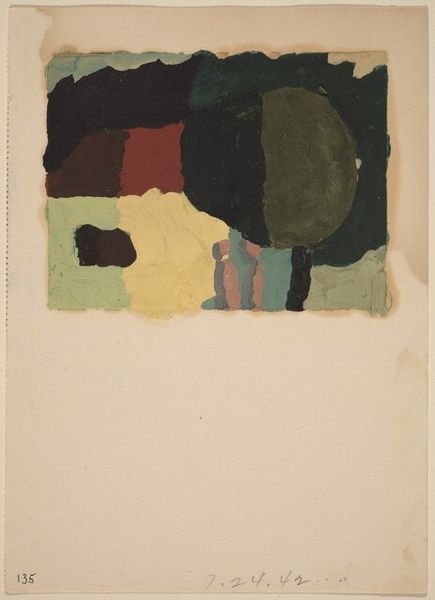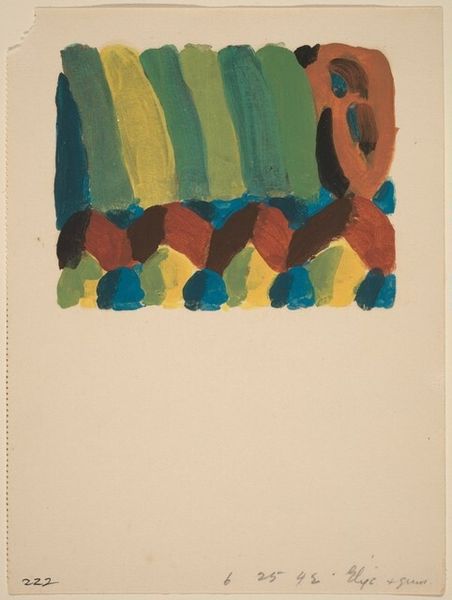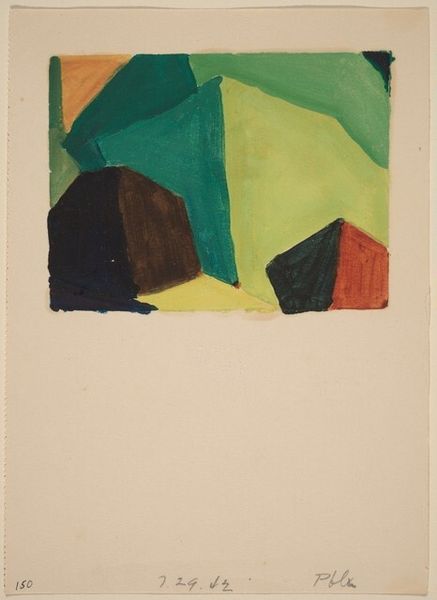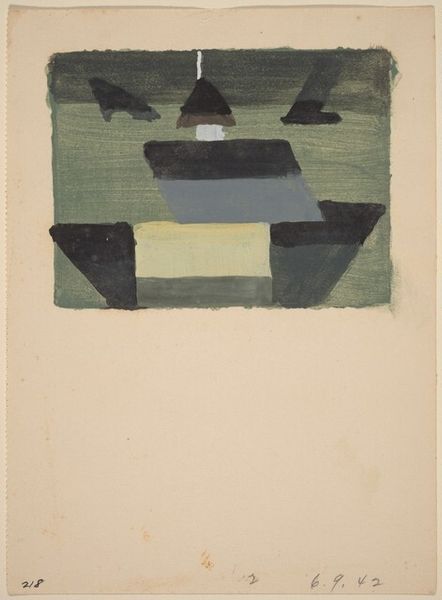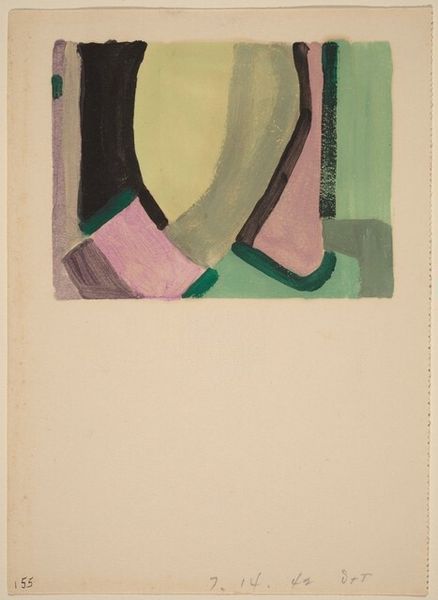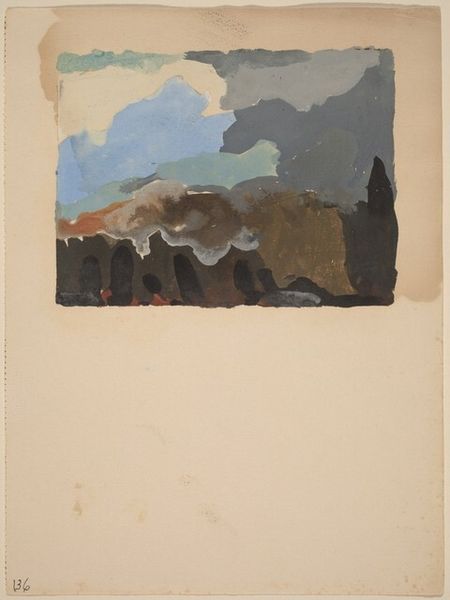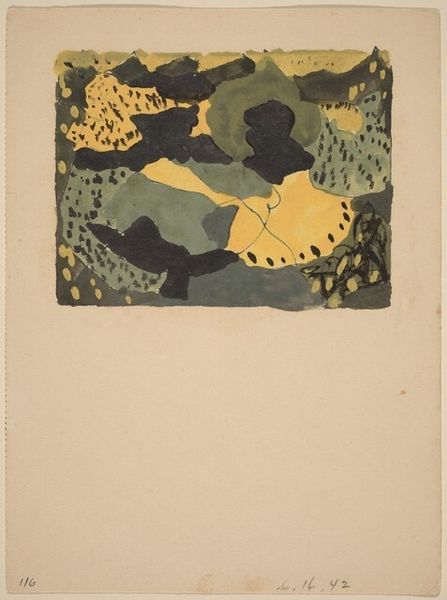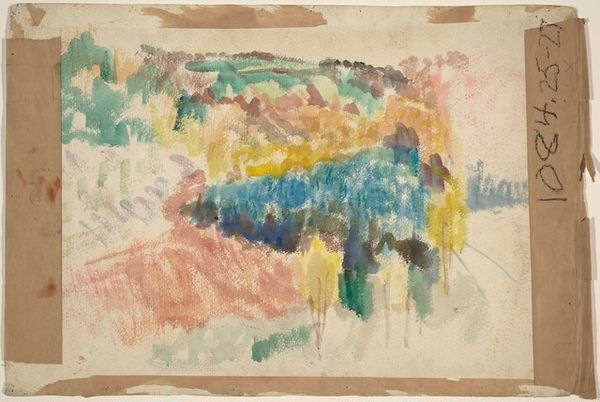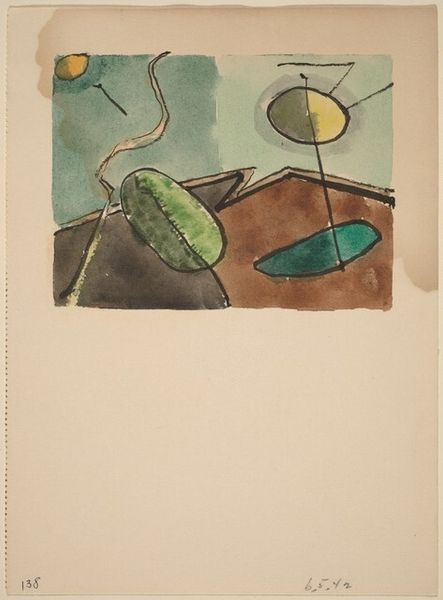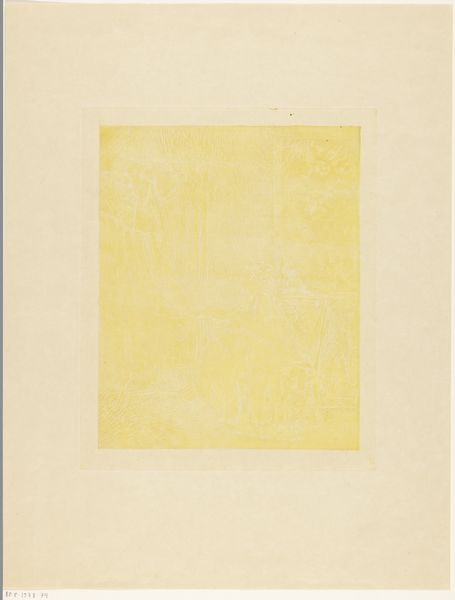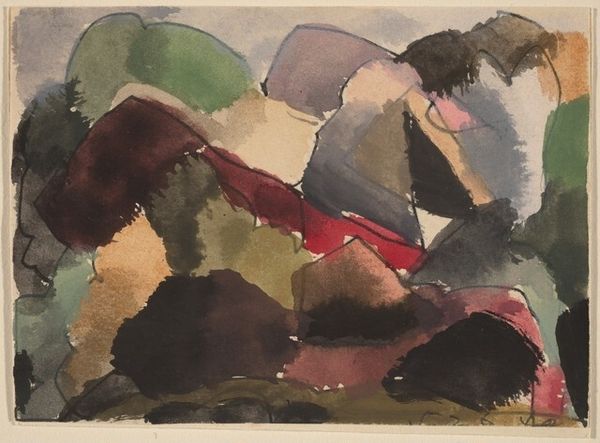
drawing, painting, watercolor
#
abstract-expressionism
#
drawing
#
water colours
#
painting
#
form
#
watercolor
#
geometric
#
modernism
#
watercolor
Dimensions: image: 8.9 x 10.3 cm (3 1/2 x 4 1/16 in.) sheet: 17.8 x 13.3 cm (7 x 5 1/4 in.)
Copyright: National Gallery of Art: CC0 1.0
Editor: This is Arthur Dove’s "Untitled" from 1942, done with watercolors. It’s a fascinating arrangement of geometric forms and organic shapes. It's so muted, yet something about the composition feels almost like a landscape… What do you see in this piece? Curator: Well, first it’s essential to situate Dove within the American Modernist project, a conscious effort to create a distinctly *American* art, independent of European traditions. It's worthwhile considering the cultural milieu during 1942, the height of World War II. Do you think that might have impacted its reception? Editor: Perhaps, the abstraction feels almost escapist. Like a move away from representing reality… Curator: Exactly! And that gets to a central tension. Many embraced abstraction as a universal language of feeling during turbulent times, offering solace amidst social upheaval, while others saw it as detached from social realities. It can reflect isolation but can you also see this an exploration of pure form? Editor: Yes, it feels almost like he’s breaking down a scene into its bare essentials. It seems the painting seeks pure expression of form in a moment where socio-political tension might otherwise affect production of more figurative artwork. But could we call this a political act? Curator: Precisely. The question is, what kind of politics? Is it a quiet resistance against prescribed artistic conventions, or a detachment from immediate political struggles? Think of museums promoting abstract art in this time frame too - where might this fit? Editor: That is interesting, it could be seen as both a refuge and a bold statement in that time. Curator: Right. And this piece pushes us to consider the complicated relationship between art, history, and social change. Editor: Absolutely. I see how placing it within its historical moment makes its artistic choices all the more compelling. Thanks!
Comments
No comments
Be the first to comment and join the conversation on the ultimate creative platform.
